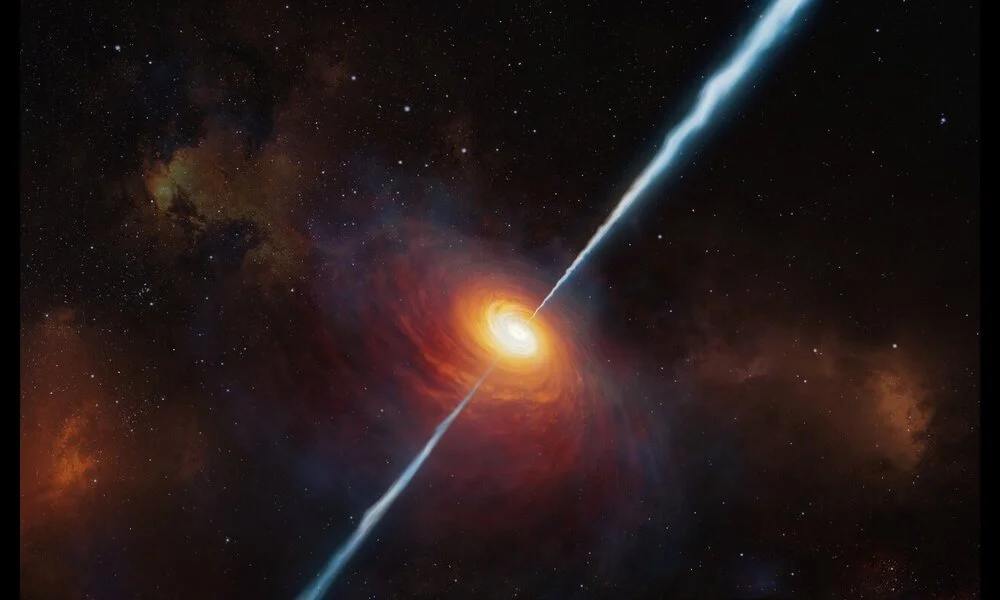Blazar TXS 0506+056 Linked to High-Energy Neutrino Emissions
Published on Mon Jan 22 2024 Artist’s rendering of quasar P172+18 | European Southern Observatory on Flickr
Artist’s rendering of quasar P172+18 | European Southern Observatory on FlickrElusive yet significant, high-energy neutrinos may have found a feasible cosmic forge. In a groundbreaking study, researchers in China have devised a model that unifies the observed neutrino events with the electronmagnetic outputs of the distant blazar TXS 0506+056. Their work, recently published, delves into this blazar — a specific type of galaxy with a supermassive black hole at its center — over multiple epochs during which neutrino events were associated with it. Deleting the constraints of previous models, this ambitious new approach marries the observed data of neutrino events from 2014 to 2023 with the broad range of TXS 0506+056's emitted light, from radio waves to gamma rays.
The model, termed the "stochastic dissipation model," suggests that a blazar's emission is composed of a persistent component — the steady output from numerous small energy bursts along the jet — and a transient component arising from occasional dramatic energy releases. The researchers argue that their model can realistically represent the number of neutrino events observed, while also aligning with the spectral energy distribution (SED) of TXS 0506+056 across various wavelengths.
Understanding how blazars could function as cosmic neutrino foundries is pivotal for high-energy astrophysics. The ability to connect high-energy neutrinos to specific cosmic sources is critical because neutrinos are unique messengers from the deep universe. Unlike photons, these subatomic particles travel through space unhindered by matter or magnetic fields, carrying pristine information about their origins.
The team's analysis considered multiple epochs, each yielding different neutrino detections, and showed that the stochastic dissipation model could accommodate the varying characteristics of TXS 0506+056 during those times. During the 2014-2015 period, for instance, the model suggested that the neutrino emissions arose from a region close to the blazar's supermassive black hole. This proximity profoundly influenced the nature of the neutrino production, which was consistent with the number of neutrinos the IceCube observatory detected.
In later epochs, changes in the positions of the emission zones around the black hole altered the neutrino production, aligning with the observed energy distributions and neutrino counts. In explaining the episodic nature of TXS 0506+056's neutrino emissions, researchers have opened a promising pathway to further our grasp of blazars and the extreme energies at play, shedding light on the complex dance of cosmic rays, magnetic fields, and high-energy neutrinos.
The study's value transcends simply tracking high-energy neutrinos to their sources; it also informs on the extreme processes occurring in and around supermassive black holes, which are still shrouded in mystery. As researchers continue to unravel the nuances of neutrino emissions from such distant celestial powerhouses, they not only paint a clearer picture of the universe's energetic panorama but also inch closer to answering fundamental questions about the very fabric of the cosmos. With future observations and refined models, the hope is not only to predict but also to comprehend the story behind these high-energy beacons.



